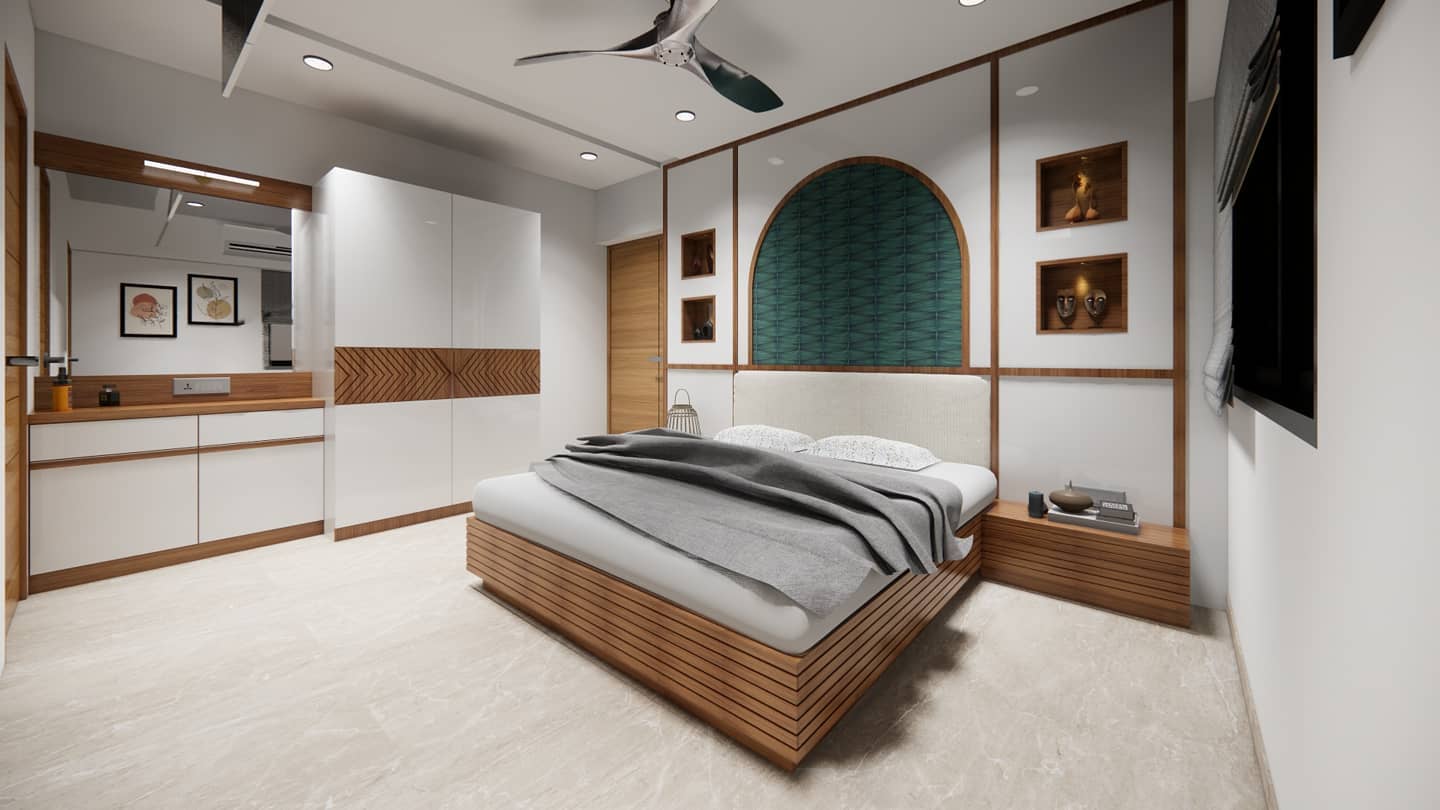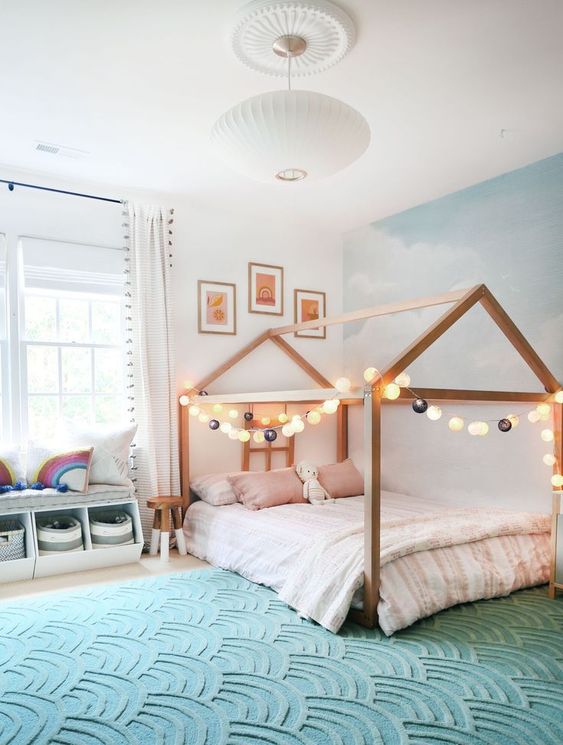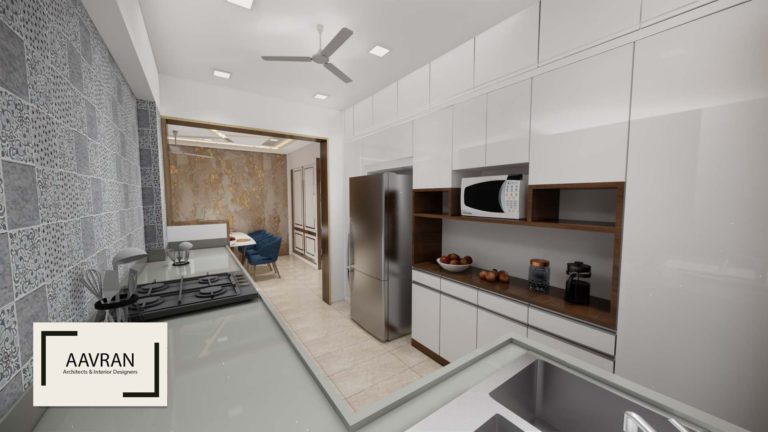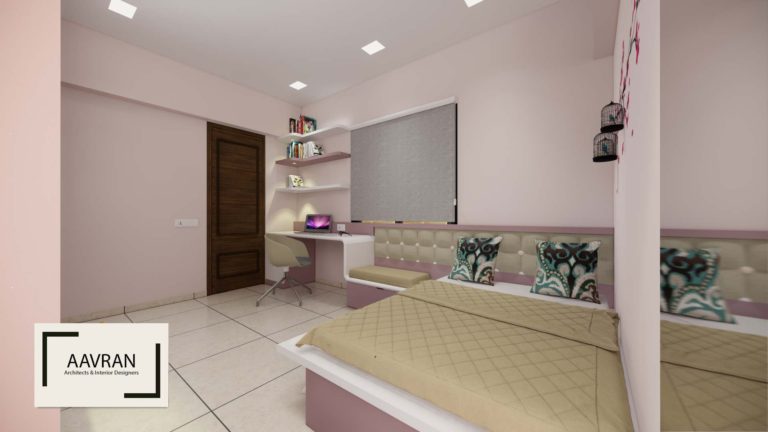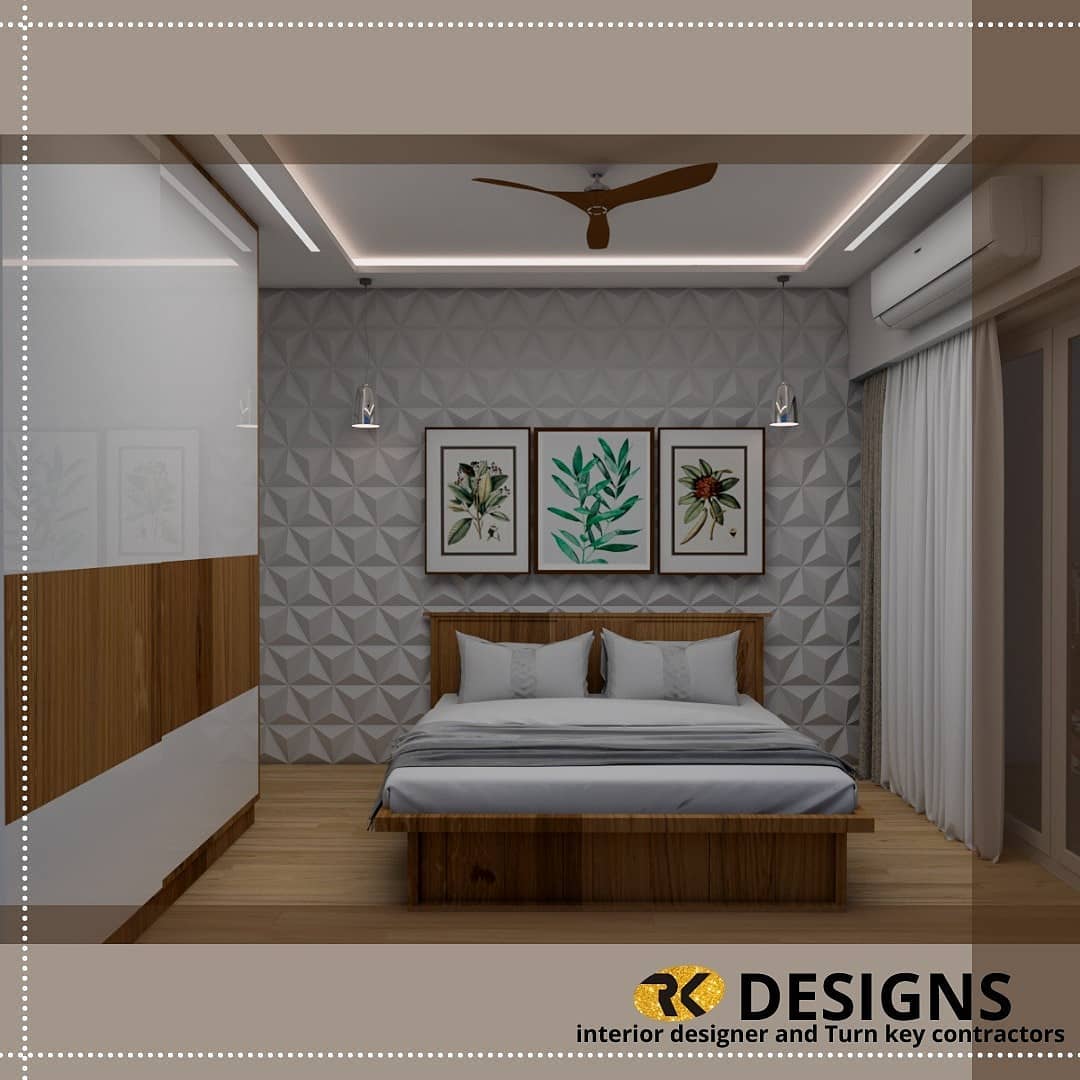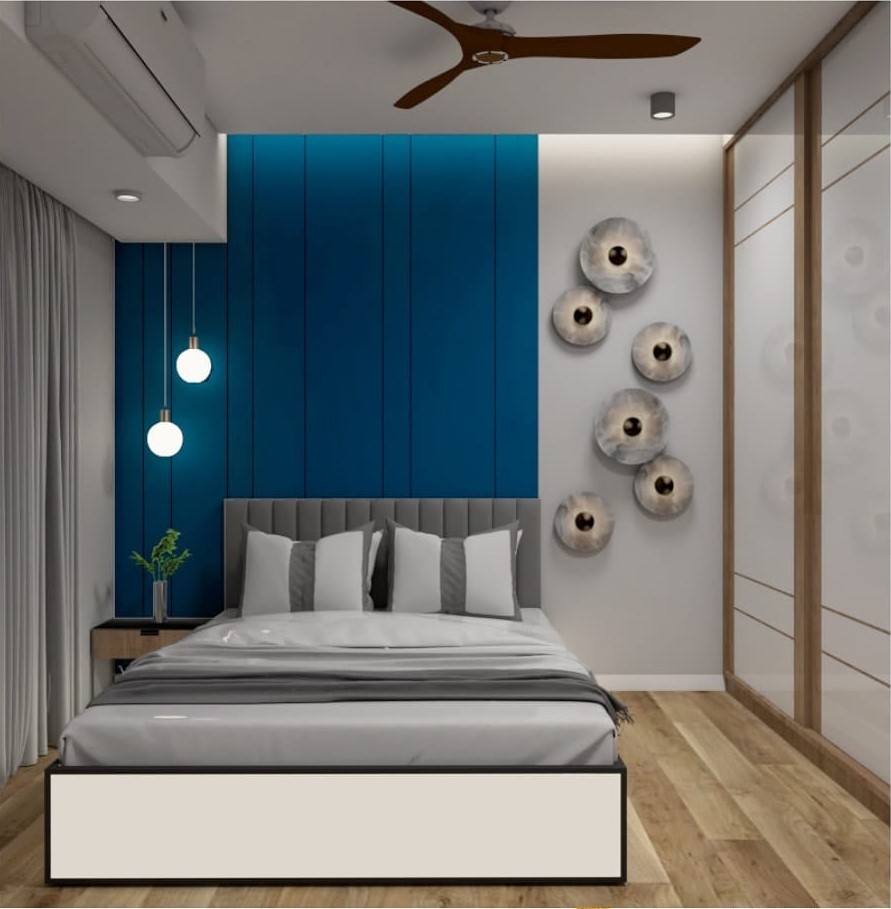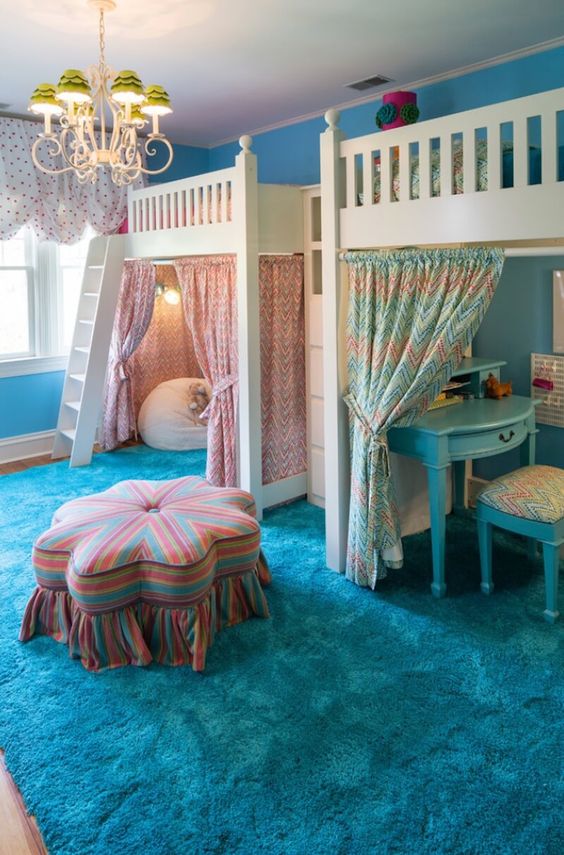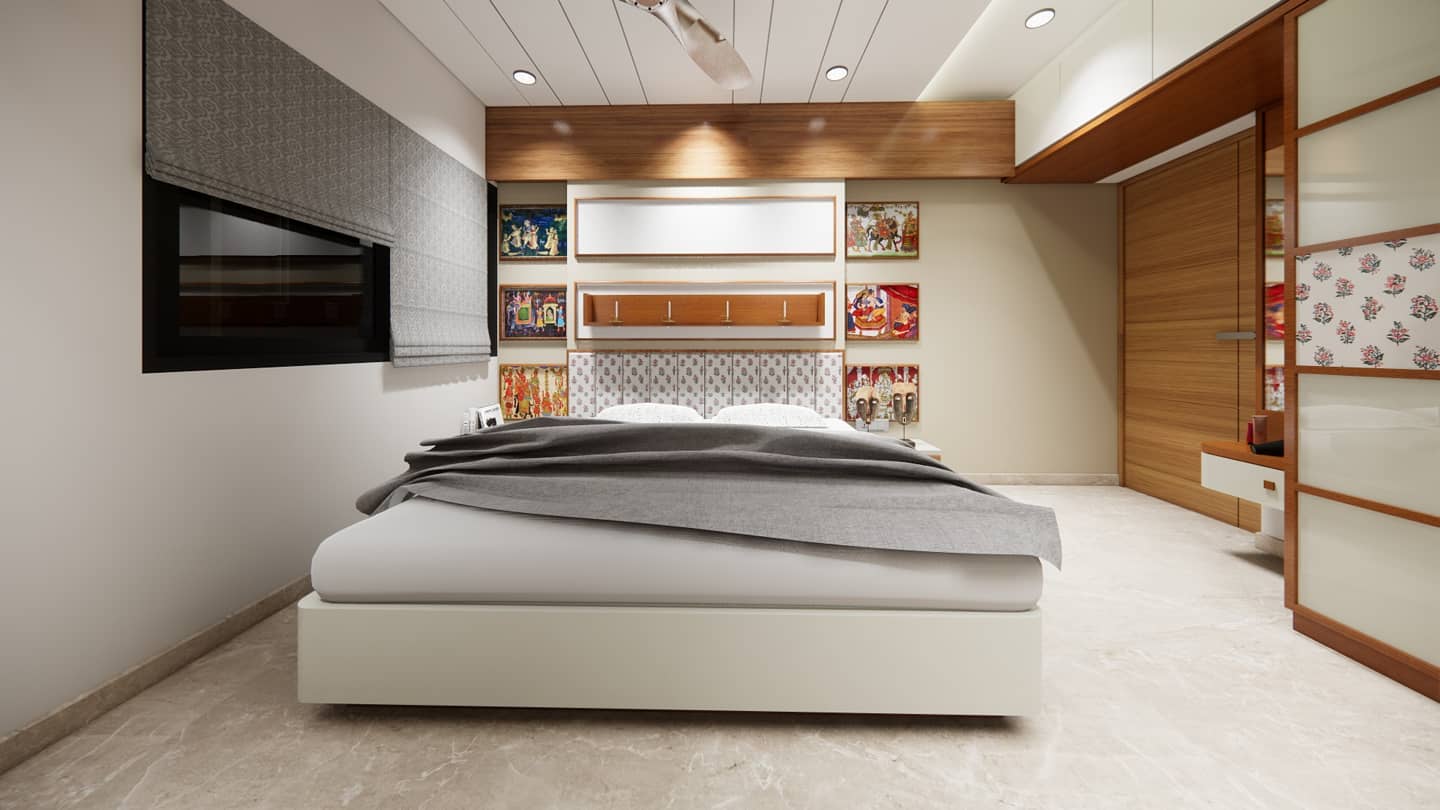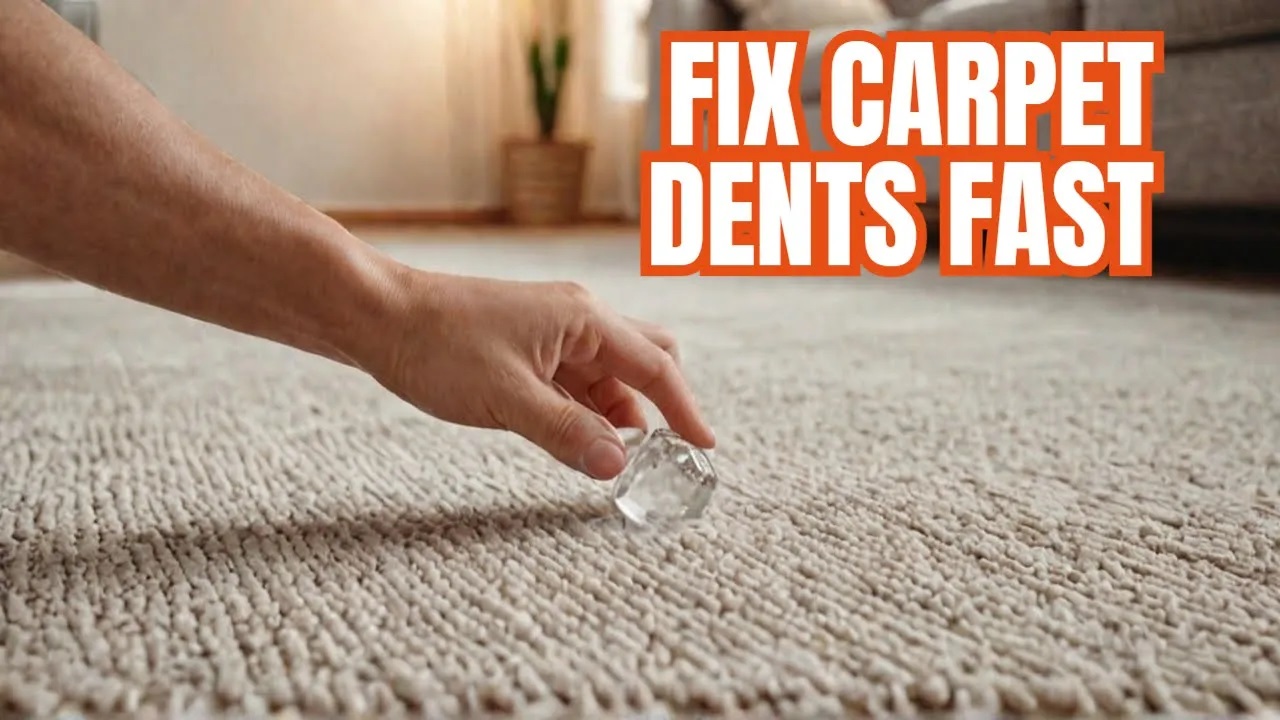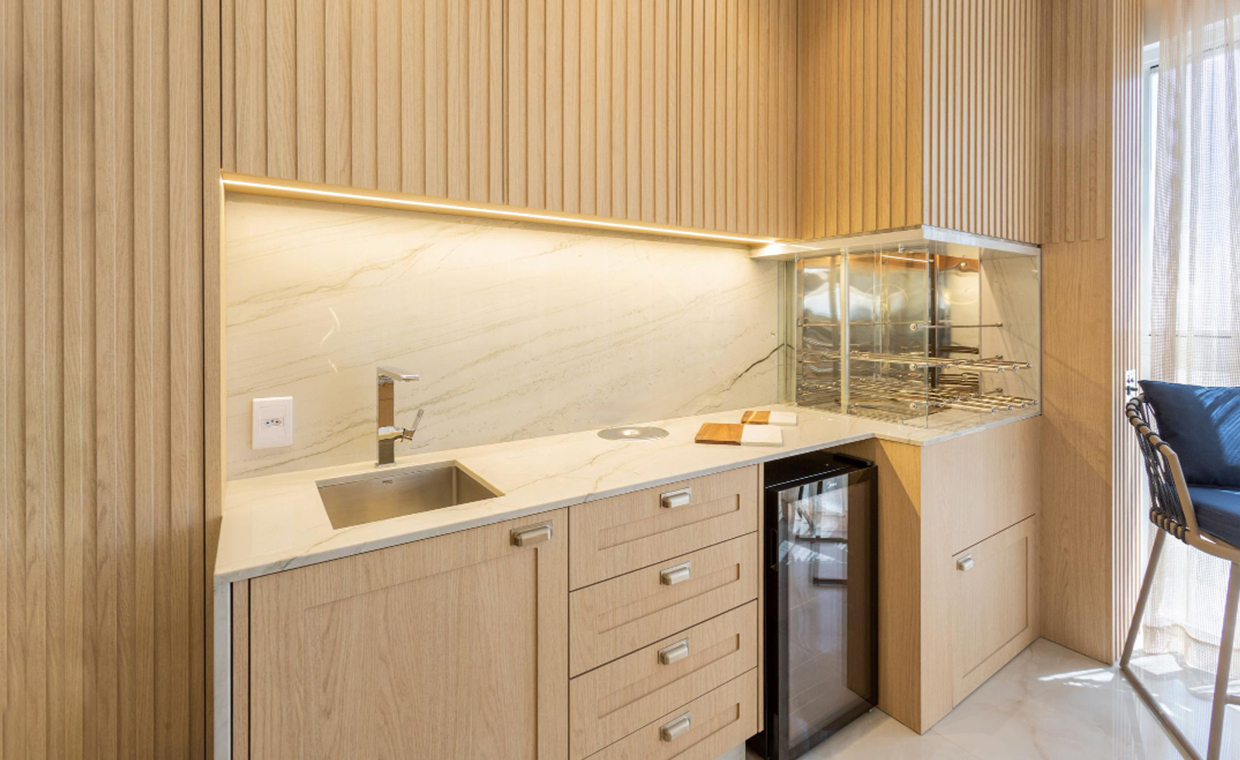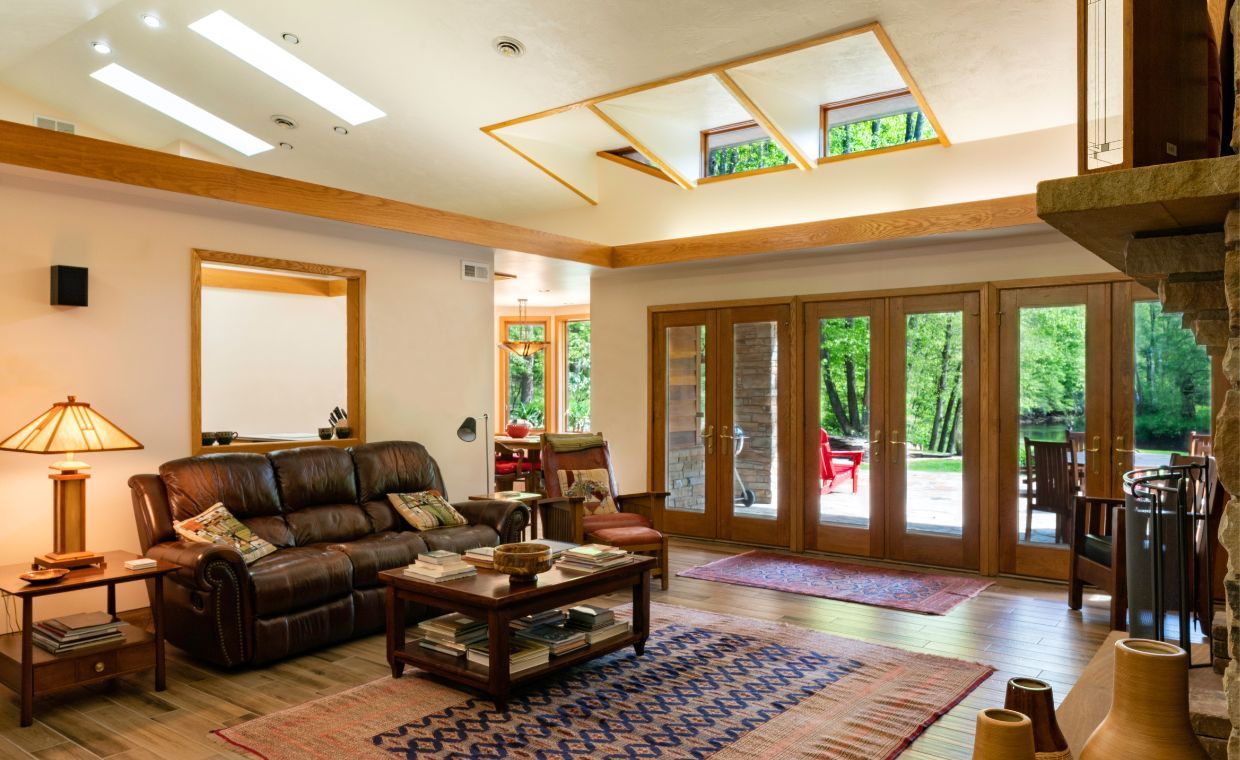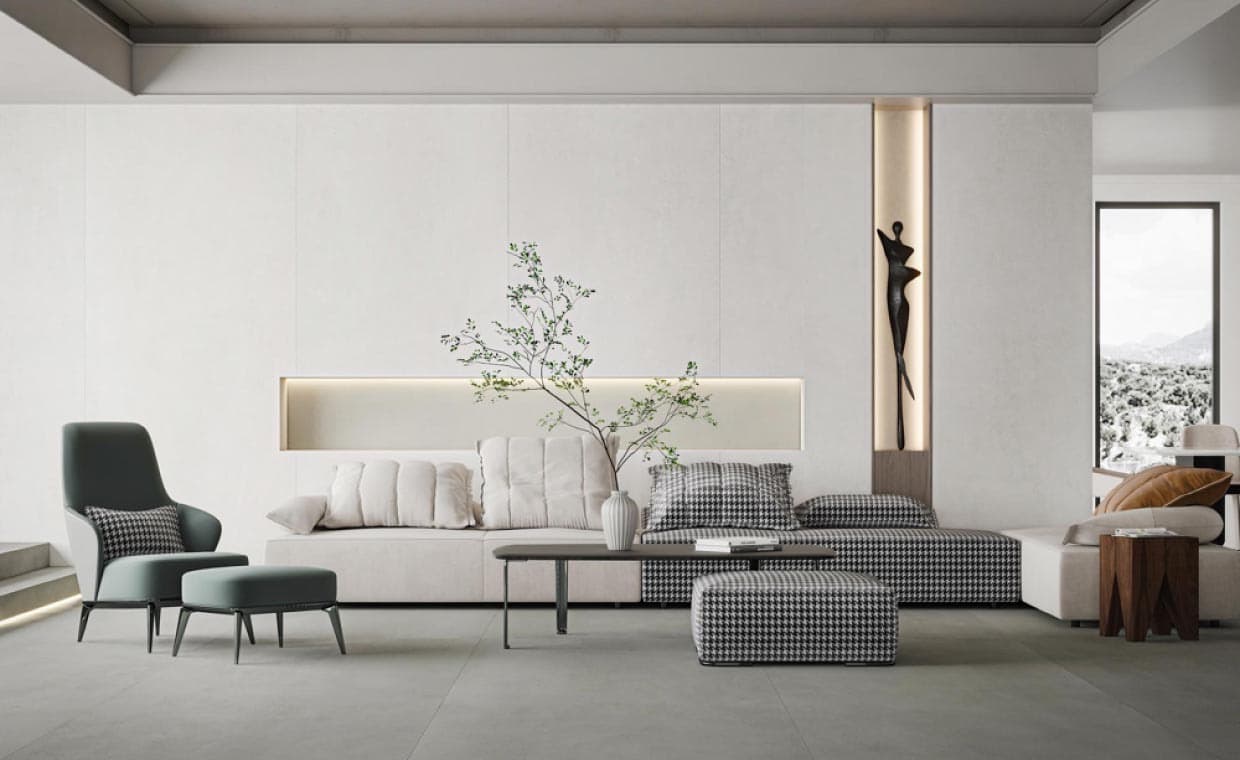
Table of Contents
Minimalist interior design has become a go-to choice for homeowners seeking serene, uncluttered living spaces that combine elegance with simplicity. Especially in small apartments, this design approach strikes a balance between functionality and aesthetics, emphasising on clean lines, open spaces, and purposeful decor. It’s not just about what you include but what you leave out, allowing each element to stand out.
At its heart, minimalist interior design embraces the ‘less is more’ philosophy. By prioritising quality over quantity and selecting versatile pieces, even the smallest living room can be transformed into a stylish, tranquil retreat. Whether you prefer a monochrome palette or natural textures, minimalism offers endless possibilities for personalisation.
Let’s explore over 20 ideas to help you create a stunning minimalist living room design perfect for small apartments.
Why Minimalist Living Works Best for Small Apartments?
01. Neutral Color Palette

A neutral colour palette is the cornerstone of minimalist interior design. Shades like soft whites, greys, and beiges create a calming atmosphere, making small spaces feel larger and more inviting. Muted tones let your furniture and architectural features shine without overwhelming the room.
For added depth in minimalist home designs, mix subtle variations in shade. Pair off-white walls with light grey furnishings for a layered look that remains true to minimalist aesthetics. This approach works well with different textures, from natural wood to sleek metals, offering flexibility in design.
Adding natural materials like jute or sisal rugs can bring warmth and texture to neutral tones. Incorporate stone or ceramic decor pieces for an earthy, grounded feel while maintaining a serene palette.
Also Read: 10 Important Tips for Choosing Colour Scheme of Your Home!
02. Multifunctional Furniture

Maximising space in small apartments starts with multifunctional furniture. Think sofa beds, extendable dining tables, or storage ottomans pieces that combine style and practicality. These versatile options are essential in minimalist interior design, helping reduce clutter and maintain a clean, organised space.
Consider nesting tables that are easy to tuck away when not in use or wall-mounted desks that fold up to save space. Opt for simple, clean-lined furniture in neutral tones to seamlessly blend into your minimalist theme. This ensures each piece contributes to both the room’s functionality and aesthetic harmony.
03. Declutter Regularly

Decluttering is the backbone of minimalist interior design. Regularly assess your living space to remove items that no longer serve a purpose, maintaining an organised and tranquil environment especially crucial in small apartments where space is at a premium.
Adopt the ‘one in, one out’ rule to prevent accumulation. Curate your belongings thoughtfully, ensuring each item in your living room adds value and aligns with your minimalist vision. A seasonal decluttering routine can help you stay on top of unnecessary items and keep your space fresh.
Also Read: How To Declutter Closet: 9 Steps To An Organized Closet
04. Wall-Mounted Storage

Wall-mounted storage solutions are perfect for small living rooms, offering practical storage without sacrificing floor space. Floating shelves, wall-mounted cabinets, and pegboards keep your space organised while adhering to minimalist interior design principles.
Choose storage options that match your room’s colour palette and materials. This helps them blend seamlessly into your decor, creating a clean, streamlined look. For added functionality, incorporate hooks or rails beneath shelves for hanging small items like keys or planters.
05. Natural Light Emphasis

Maximising natural light is a hallmark of minimalist interior design. Large windows, sheer curtains, and reflective surfaces can make a small apartment feel bright and spacious. Natural light accentuates the simplicity and beauty of minimalist decor, a key element in modern interior design.
Position mirrors to reflect light and create the illusion of a larger space. Keep window treatments minimal to let natural light remain the focal point. For privacy without compromising light, consider frosted glass or light-filtering blinds. Incorporating skylights or glass doors can also enhance the natural light flow, a common feature in minimalist house design.
Also Read: Secrets of Sunlight | Natural Light in Home | Helps in Saving Energy!
06. Compact Seating Arrangements

Compact seating arrangements are essential in small apartments. Sleek sofas, loveseats, and armless chairs provide comfort without overwhelming the space. Stick to simple silhouettes and neutral fabrics to stay true to minimalist interior design.
Modular seating offers flexibility, allowing you to customise layouts based on your needs. This keeps your living room functional and uncluttered. For a cosy touch, add a single statement chair in a contrasting but muted colour to break the monotony. Incorporate benches with hidden storage or slim-profile sectionals, popular choices in minimalist home decor.
07. Low-Profile Furniture

Low-profile furniture enhances the sense of openness in small living spaces. Pieces like low-slung sofas, coffee tables, and TV units align with minimalist interior design principles, promoting spaciousness and calm.
Keeping furniture closer to the ground amplifies vertical space, making ceilings appear higher, and rooms feel larger. Sleek, legged furniture creates an airy, floating effect, further enhancing the minimalist aesthetic. Opt for streamlined, Scandinavian-inspired designs commonly seen in modern minimalist interior design. Floating media consoles and platform beds are perfect examples of minimalist house designs that maximise both style and space.
08. Mirrors for Depth
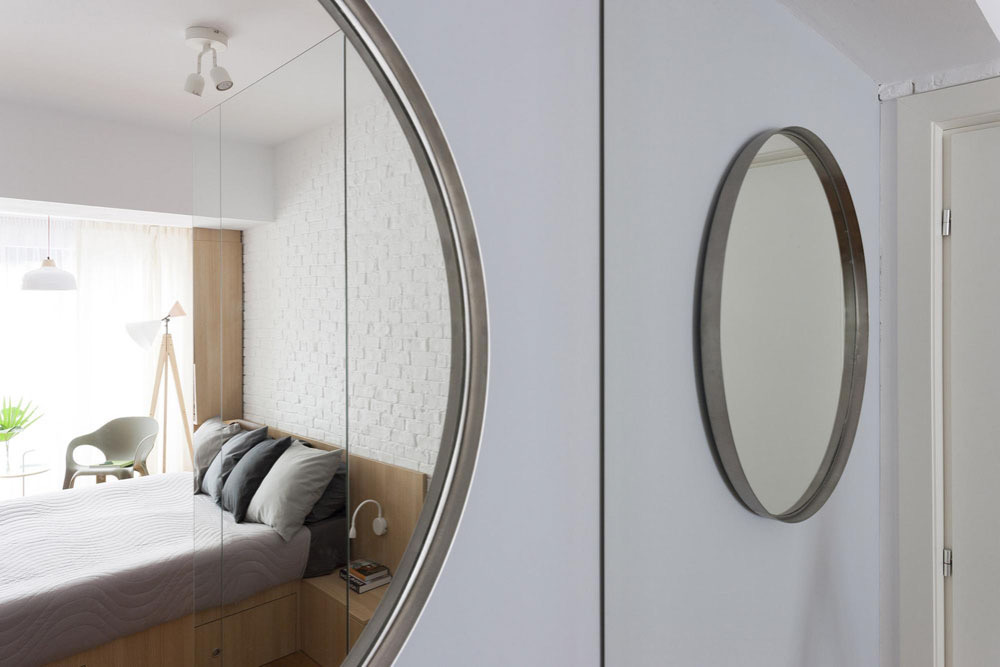
Mirrors add depth and dimension, making them a staple in minimalist interior design. Strategically placed mirrors reflect light, creating the illusion of a larger space. This technique is not limited to living rooms; it works equally well in minimalist bedroom decor, where a large, frameless mirror can make a compact bedroom feel airy and open.
Opt for frameless or simple-framed mirrors that blend into your decor. Place them opposite windows to maximise their reflective benefits. In line with minimalist style interior design, consider using mirrored furniture, like a coffee table or a sleek mirrored wardrobe in the bedroom, to subtly enhance light and space while maintaining a clean, uncluttered look. Additionally, mirrored backsplash panels in minimalist kitchens can amplify natural light and contribute to a cohesive, streamlined aesthetic.
09. Minimalist Wall Art

In minimalist interior design, wall art should be simple and understated. To maintain a cohesive look, select pieces with clean lines, neutral tones, or monochrome designs. For example, a large canvas featuring abstract line drawings or a minimalist geometric print can be the focal point in your minimalist living room design.
A single large artwork or a symmetrical arrangement of smaller pieces adds interest without overwhelming the space. Consider black-and-white photography or abstract line drawings to add a sophisticated touch. In a minimalist house interior, framed botanical prints or minimalist typography art can subtly enhance the decor while maintaining a serene, uncluttered aesthetic.
Also Read: 15 Wall Decor Ideas to Refresh Your Space!
10. Smart Storage Solutions

Innovative storage solutions are key to a clutter-free living room. Hidden compartments, built-in shelving, and furniture with integrated storage align perfectly with minimalist interior design. In a minimalist living room design, consider sleek, built-in cabinets that blend effortlessly with the walls, providing ample storage without disrupting the clean lines of the space.
By keeping everyday items out of sight, you maintain a tidy, serene environment. Choose storage that blends with your decor to preserve the minimalist aesthetic. Use under-sofa storage bins or ottomans with hidden compartments for additional space-saving options. In a minimalist house interior, wall-mounted storage units or concealed media cabinets offer functional solutions while keeping the living space open and airy.
Also Read: Creative Storage Solutions for Small Spaces of Your Home
11. Open Shelving
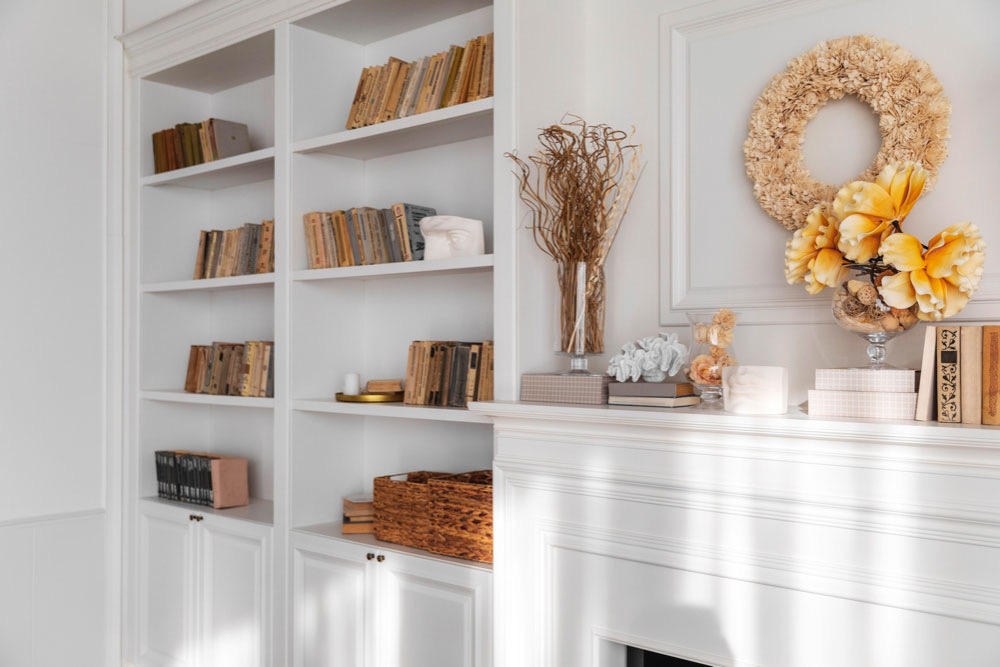
Open shelving combines functionality with aesthetic appeal. Displaying a curated selection of books or decor adds character without cluttering the space. In a minimalist living room design, use floating wooden shelves to display a few carefully chosen decor items, like ceramic vases, monochrome photo frames, or small potted plants.
Ensure shelves aren’t overcrowded, and maintain a cohesive colour palette. This keeps the look clean and organised, a core tenet of minimalist interior design. Group similar items together and leave space between objects to create a balanced, airy feel. In a minimalist house interior, open shelving in natural wood or metal finishes can add warmth and texture, contributing to a harmonious and sophisticated design.
12. Textural Elements

Introducing varied textures adds warmth and depth to a minimalist living room. Natural materials like wood, linen, and stone create a cosy yet refined atmosphere.
Mixing textures such as a wool rug, leather sofa, and metal accents—adds subtle interest. Keep the colour palette neutral to maintain a cohesive, minimalist aesthetic. Consider incorporating tactile elements like woven baskets or textured cushions for added comfort.
13. Strategic Lighting

Lighting is vital in minimalist interior design. Choose sleek fixtures like pendant lights, floor lamps, or recessed lighting that complement your decor. Layering light sources creates a balanced ambience. Combine task lighting with ambient and accent lights to add depth and dimension to the space.
Dimmable lights add flexibility, allowing you to adjust the mood. The aim is to enhance natural features without overpowering the space. For a modern touch, incorporate LED strip lights under shelves or along architectural features. Consider minimalist chandeliers with geometric shapes or sculptural designs to serve as both a light source and a focal point. Wall sconces with simple lines can free up floor space while adding a touch of elegance.
14. Indoor Plants

Indoor plants bring a touch of nature into your minimalist living room. Opt for low-maintenance varieties like succulents, snake plants, or fiddle-leaf figs to complement the minimalist interior design. Consider trailing plants like pothos or string of pearls for a soft, cascading effect that adds movement without clutter.
Also Read: Indoor Plants At Home – Six Spaces That You Can Utilize And How?
Plants enhance both aesthetic appeal and air quality. Use simple pots that align with your room’s decor for a cohesive look. Consider grouping plants of varying heights to create visual interest without clutter. For an even sleeker appearance, use wall-mounted planters or vertical garden installations to save floor space while introducing greenery.
15. Rug Placement

A thoughtfully placed rug can anchor your living room and define areas within a small space. Choose rugs with subtle patterns or solid colours that complement the minimalist interior design. For visual continuity, select a rug that echoes the tones of your furniture or walls.
Ensure the rug’s size matches your furniture for a balanced look. Layering rugs or using them to delineate seating areas adds depth without clutter. Opt for natural fibres like jute or sisal for a textured, organic feel. Consider round rugs to soften sharp lines or runners in narrow spaces to elongate the room visually.
Also Read: 15+ Ideas to Spruce up Your Homes with Geometric Rugs
16. Streamlined Layout

A streamlined layout is key in minimalist home design. Arrange furniture to promote easy movement and openness. Avoid overcrowding and focus on functionality. Consider modular furniture that can be rearranged easily to adapt to different needs or occasions.
Consider natural light flow and focal points when planning your layout. Achieve a balance between form and function for a comfortable, uncluttered space. Use area rugs or lighting to define zones within an open-plan living room. Incorporate symmetry in furniture placement to enhance the sense of order and calm, which is central to minimalist decor ideas.
17. Floating Furniture

Floating furniture, like wall-mounted shelves and suspended cabinets, enhances the sense of space in small living rooms. These pieces contribute to a modern, clean look in line with minimalist interior design. Floating TV units or console tables can create visual continuity by keeping the floor visible and uncluttered.
Elevating furniture off the floor creates an airy feel and simplifies cleaning, supporting a minimalist lifestyle. Consider floating desks or vanities to maintain a sleek, uncluttered appearance. Even floating nightstands or side tables can make a room feel more open and spacious while providing essential functionality.
Also Read: Easy And Unique DIY Floating Shelves For Your House!
18. Subtle Patterns

While minimalism favours solid colours, subtle patterns can add interest. Geometric designs or soft stripes enhance the room without overwhelming it. Herringbone or chevron patterns in flooring or textiles can introduce sophistication while maintaining simplicity.
Incorporate patterns on throw pillows, rugs, or curtains, ensuring they complement the overall minimalist interior design. Balance is key to avoiding visual clutter in minimalist decor ideas. For a cohesive look, limit patterns to one or two elements within the space. Alternatively, use tone-on-tone patterns where the design is in the same colour family, creating depth without disrupting the minimalist aesthetic.
19. Hidden Tech Solutions

Seamlessly integrating technology is a hallmark of modern minimalist interior design. Conceal cables, use built-in speakers, and choose unobtrusive gadgets that blend into the decor. Opt for sleek, minimalist designs like slim-profile sound bars or discreet, in-ceiling speakers to maintain a clean aesthetic.
Opt for wireless solutions and smart devices that maintain the minimalist aesthetic while adding functionality. Mount your TV on the wall and use cable management systems to keep wires hidden from view. Consider motorised blinds or smart lighting systems controlled via apps to eliminate the need for bulky switches and cords. Wireless charging stations embedded into furniture, such as coffee tables or side tables, can also help reduce visible clutter while enhancing convenience.
20. Cohesive Theme

A cohesive theme ties all elements of minimalist interior design together. Consistency in colour, materials, and style creates a harmonious, balanced living room. To establish visual unity, select a limited palette of two to three complementary colours and repeat them across different elements—walls, furniture, and decor.
Avoid mixing too many styles or colours. Focus on a unified look that reflects your taste, ensuring your minimalist living room is both functional and visually appealing. Use recurring motifs or materials, like metal or wood, to reinforce your design theme. For instance, if you choose matte black accents, carry that through in lighting fixtures, furniture legs, and hardware. Similarly, integrating the same type of wood finish across shelves, tables, and frames can create a sense of cohesion while maintaining the minimalist charm.
Conclusion
For more inspiration and practical tips on designing your dream home, Gharpedia offers expert guidance tailored to every stage of your home journey. Whether you’re building, renovating, or simply refreshing your interiors, Gharpedia’s easy-to-understand resources ensure your home reflects both style and functionality. With a focus on health, safety, and happiness, Gharpedia helps you make informed decisions for a beautiful, lasting minimalist interior design.
FAQs Regarding Minimalist Interior Design
01. What is minimalist interior design for a living room?
Minimalist interior design focuses on simplicity, functionality, and clean aesthetics. It involves using a neutral color palette, essential furniture, and clutter-free spaces to create a serene and visually appealing living room.
02. How can I make my small living room look more spacious?
To make a small living room appear larger, use light colors, multifunctional furniture, large mirrors, and minimal décor. Opt for furniture with exposed legs and keep the layout open to enhance the sense of space.
03. What are the best colors for a minimalist living room?
Neutral shades like white, beige, gray, and soft pastels work best for a minimalist living room. These colors create a calm and airy atmosphere while allowing natural light to enhance the space.
04. How do I choose the right furniture for a minimalist small apartment?
Select furniture with simple lines, compact designs, and multipurpose functionality. Foldable tables, wall-mounted shelves, and sleek sofas with storage compartments are great choices for maximizing space in a minimalist living room.
05. What are some budget-friendly ways to achieve a minimalist living room?
Declutter your space, repurpose existing furniture, use DIY décor, and invest in a few statement pieces instead of multiple decorative items. Choosing quality over quantity helps achieve a minimalist look without overspending.
Also Read: Crafting Elegance Your Guide to a Timeless Interior
References
Patton, M. (2025) ‘9 Simple Ways to Make a Small Space Look Layered and Personal (Not Cluttered)’, Better Homes & Gardens, 16 March. Available at: https://www.bhg.com/layer-decor-small-space-1169420
40 Small Apartment Living Room Ideas to Maximize Space and Style’ (2025) The Spruce, 14 March. Available at: https://www.thespruce.com/small-apartment-living-room-ideas-7111452






